
“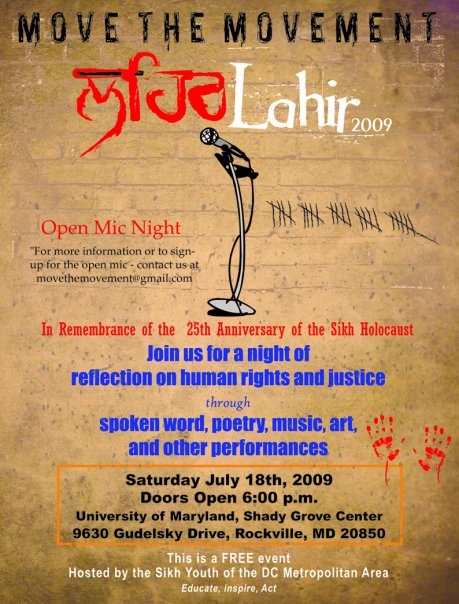 Never doubt that a small group of thoughtful, committed citizens can change the world. Indeed, it is the only thing that ever has.”
Never doubt that a small group of thoughtful, committed citizens can change the world. Indeed, it is the only thing that ever has.”
(Margaret Mead)
Last Summer, a small group of thoughtful, committed Sikh youth from the DC Metropolitan area came together to form “Lahir” (movement) – a conference organized and run by high school and college students to promote human rights awareness. There were three themes to the event. Educate, Inspire, and Act. The “Educate” segment consisted of a series of short presentations outlining the history of post-1984 human rights violations in Punjab, based on published documentation from Ensaaf. These presentations interspersed with videos of the victim’s families told the story of grave violations that occurred between 1984-1995 during the counter-insurgency movement – including torture, disappearances, and illegal cremations. The “Inspire” segment consisted of poetry, spoken word, and musical performances along the same theme. In the final portion, titled “Act”, participants broke out in to discussion groups and brainstormed ideas on how the Punjab case can be raised to a mainstream audience and reviewing what other communities have done to highlight their cause. Overall, the conference was a resounding success and launched several new initiatives.
This Summer, the Lahir team has re-assembled and Sikh youth activists and artists from all over the country will again descend upon the Nation’s Capital for Lahir 2009! This year’s format is an all-out ‘Open Mic’ with musical performances, displayed art, poetry, and spoken word. Trailers have been circulating around the internet, providing a glimpse of what to expect.
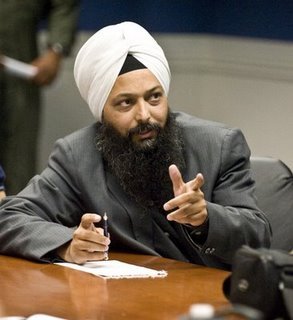 In a previous blog, I wrote about Jarnail Singh Journalist – Sikh Folk Hero. I also mentioned about his action as an act of rebellion that needs the support and institutions to become a revolution. In this post, he, himself, needs support.
In a previous blog, I wrote about Jarnail Singh Journalist – Sikh Folk Hero. I also mentioned about his action as an act of rebellion that needs the support and institutions to become a revolution. In this post, he, himself, needs support.
Unfortunately this week, as he flung his shoe demanding justice, he, himself, was victimized as he was terminated from the Hindi news daily Dainak Jagran, after more than a decade of service.
“As a journalist, I regret what I have done. It was not proper for a journalist to act in that manner. I was emotionally overtaken and exasperated, just like so many Sikhs are,” he said today.
“But I thought the chapter was closed because of the way the home minister had reacted and had accepted that not enough people (who were behind the killing of Sikhs in 1984) had been punished,” Jarnail said.
“Now I feel that I am being victimised, punished for raising my voice against the injustice of 1984 and the CBI’s and the government’s unwillingness to prosecute those who were responsible for it”, Jarnail said. He said he was even more resolute now.[link]
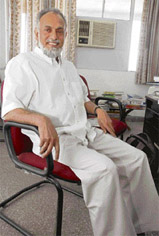 It is with saddness that we report on the passing of Ram Narayan Kumar, a human rights activist who actively and vocally worked on the dissapearances and killings in Punjab. He was 56 years old.
It is with saddness that we report on the passing of Ram Narayan Kumar, a human rights activist who actively and vocally worked on the dissapearances and killings in Punjab. He was 56 years old.
Kumar was a born human rights activist. He had engaged himself with human rights activism since 1975 when he was jailed for 19 months for protesting against the imposition of emergency. Though he belonged to Andhra Pradesh, his conscience dragged him to protest against the wide spread human rights violations in Punjab. There he co-founded Committee for Coordination on Disappearances in Punjab (CCDP) and co-authored a voluminous edition called ‘Reduced To Ashes’, a compilation of about 600 cases of human rights violations in the state. This report prompted the National Human Rights Commission to take cognizance of the large scale custodial disappearances and deaths in Punjab during that decade. [link]
In Terror in Punjab, Ram Narayan Kumar traces the roots of Sikh dissent in India that eventually culminated in the armed confrontation in 1984. Kumar also addresses the post-1984 period of Sikh militancy and the Indian state’s success in countering this militancy.
Kumar…documents and pays tribute to the Akali tradition of non-violence. He refers to the Akali Dal’s peaceful struggle for a Punjabi-speaking state, and makes an important point of historical value by highlighting that the Akali agitation of the 1980s for Punjab’s demands constituted “the largest non-violent movement in the sub-continent, including both the colonial and the independent periods, with over 150,000 volunteers courting arrest within a period of three years.” [link]
Ram Narayan Kumar worked extensively with several human rights organizations, including Ensaaf and his contributions to the field of human rights justice were invaluable. He played an important role in defending the rights of families who had been affected by the violence in Punjab. We will remember his work, his contributions and his value to the very important work being done for justice in Punjab.
Oh India. You can’t hide the skeletons in your closet forever.
It appears that the US Commission on International Religious Freedom was on its way to India this week. (The USCIRF is a federal group that works to promote freedom of thought, conscience and religion; protect people from abuses like detention, killing and torture; and challenge religious intolerance and repression throughout the world.) Well, they were scheduled to go, had their tickets ready and their bags packed. But India’s administration decided that they weren’t welcome in India.
It’s really quite ironic. The Congress party’s recent Parliamentary win over the BJP has been seen as an explicit rejection of the religious intolerance that the BJP represents (though it may have had more to do with support for Congress’ economic policies). Yet it is the Congress party administration that has refused USCIRF entry. Maybe the Congress party’s sound defeat of the BJP has swelled the Congress Party’s confidence a little too much.
New Delhi knew that the USCIRF team was scheduled to leave on June 12, but the visas just didn’t get stamped in time. Was it just a rare and regrettable oversight? [After all, with so many tourists flooding the country, a few visas could fall through the cracks right? (HA!)]
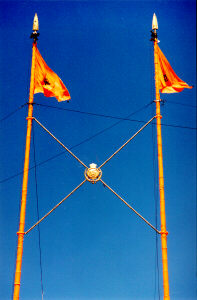 Play along with me here…imagine this Sunday you walk in to your local Gurdwara – remove your shoes, wash your hands, and as you make your way to the main darbar hall, you read the notices on the wall – “Education Committee holding Kirtan Classes Wednesday Night @ 6pm.” Next to that, another sign “Cultural Committee hosts Punjabi night next Saturday!” Further along, you see “Public Affairs Committee presents Interfaith Meeting on Friday.” Then right before you enter the darbar hall, you see…
Play along with me here…imagine this Sunday you walk in to your local Gurdwara – remove your shoes, wash your hands, and as you make your way to the main darbar hall, you read the notices on the wall – “Education Committee holding Kirtan Classes Wednesday Night @ 6pm.” Next to that, another sign “Cultural Committee hosts Punjabi night next Saturday!” Further along, you see “Public Affairs Committee presents Interfaith Meeting on Friday.” Then right before you enter the darbar hall, you see…
Human Rights Committee holding urgent action letter-writing workshop for two Indonesian prisoners of conscience, Sunday after Langar – and don’t forget the “Justice for Darfur” rally this Saturday morning, bus leaves at 8am Sharp!
Whoa! What kind of radical Gurdwara is this? What are the youth up to now? Is this one of those extremist Gurdwaras?
Or…is it the kind of Gurdwara Guru Sahib had intended?
Guru Nanak’s mission was based on the fundamental principle of human rights. We see this not only through his Baani, but throughout significant historical events – whether it was speaking out against the caste system and refusing to the wear the janeoo or his challenge of the tyrannical ruler Babar. Even in his ninth form, Guru Tegh Bahadur gave his life speaking out for a people whose practices he disagreed with, but supported their right to practice religion freely. He gave his life for the freedom of choice and the freedom of religion. There are several amazing stories of the Guru’s activism in the area of human rights and social justice…but strangely, this subject in the context of current events has now become taboo.
(more…)
I wanted to take the time to highlight two issues (Part 2 to be posted soon) which have plagued the Punjabi Sikh community for many, many years. I know that discussing these issues over and over again is overwhelmingly tedious for the majority of people. Quite frankly, I agree. However, if I didn’t believe that having these important discussions and bringing awareness to these issues over (and over, and over) again added some value to potential solutions – then I wouldn’t waste the space. Needless to say, these issues don’t seem to be going away which means these conversations are that much more important to have.
A recent article in the NYTimes expresses surprise at the fact that female feticide is occurring within immigrant communities residing in the United States. The thought seems to be that preference of male children should ideally disappear with assimilation into western societies. (For those of us hanging out in The Langar Hall, we know this isn’t always the case in the Punjabi community). The article uses US Census Data to provide quantitative evidence that there exists a bias for male children in certain Asian American communities.
Demographers say the statistical deviation among Asian-American families is significant, and they believe it reflects not only a preference for male children, but a growing tendency for these families to embrace sex-selection techniques, like in vitro fertilization and sperm sorting, or abortion.
New immigrants typically transplant some of their customs and culture to the United States – from tastes in food and child-rearing practices to their emphasis on education and the elevated social and economic status of males. [emphasis added]
This latter point is especially significant. Is the problem of sex-selective abortions purely cultural and is that why it continues to be an “acceptable” problem?
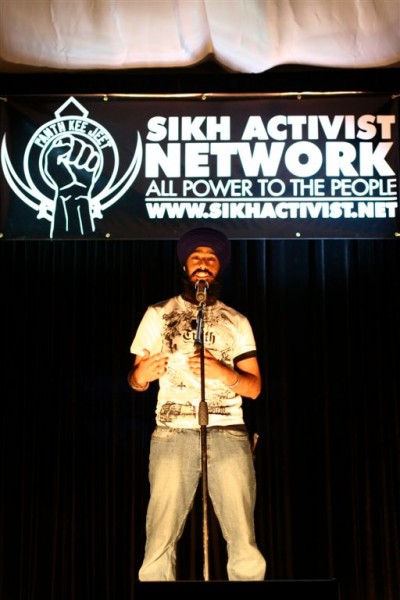
It is often said that a revolution begins not with the sword but with the pen. However, last Friday night in a packed banquet hall in the Toronto suburb of Malton, I witnessed a revolution begin with the microphone.
At an event entitled “When Lions Roar”, fantastically organized by the Sikh Activist Network, one young artist after another got on to the mike and paid homage to the lives destroyed in 1984. I was blown away by the talent and passion displayed by the performers. Through the art of spoken word, music, and action, each of the 26 acts put a different face on the impact of June 1984. They were all unique in their perspective, but all shared one common thread: 1984 is just too important to forget.
Over 1000 people gathered to attend the 4+ hour event. They covered the entire spectrum of Sikh life. This was not your typical retreat and kirtan crowd. In fact, the diversity of performers and audience has challenged me to rethink my stereotypes about who cares about 1984 and the future of the Sikh panth. Individuals that I would have never suspected of having even a passing interest in Sikhi or the Sikh community, would come up to the mike and speak with such energy, insight and emotion. They often reduced me to tears. And most amazing was the fact that almost all of them weren’t even alive in June 1984.
For a thirty-something guy like me who has always considered myself part of the “youth”, it was indeed a little bit humbling to realize that, while I’d probably still be the youngest guy at a Youth Akali Dal meeting, I’m now probably a generation or two above the youngest Sikh leaders. Which means me and my fellow Generation X-ers need to spend less time trying to do it all ourselves, and more time using our resources to enable the next wave of younger Sikhs to establish their own voice and institutions. We were the first generation coming through the diaspora, with little support from our elders. However, we can make it easier on our younger brothers and sisters. We can provide them seed funding to start their dreams, connect them those that can help them along the path, and help coach them through their challenges.
As you’ll see from the videos and photos, the next generation has indeed stepped up, their language of change is hip-hop and I think they’re gonna be alright.
Click through for videos and pictures.
In remembrance of the 25th anniversary of the Darbar Sahib attack, I’m re-posting a piece I had written for sikhchic.com‘s “1984 & I” series:
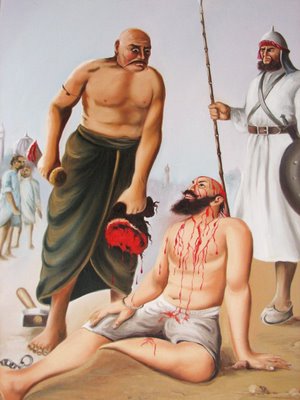
This Is Who We Are
Years ago, I was giving a local church group a tour of our Gurdwara. While I was showing them around the langar hall and explaining the history and significance of langar, I noticed that I was losing my audience. It took me a second to figure it out, but it appeared they were fixated on one of the images on the wall. It was the painting we’ve all seen of Bhai TaruSingh being scalped and blood running down his body. I’m not sure what shocked them more – the graphic painting itself, or the five-year-old boy sitting beneath it, quietly eating his meal.
For just a second, I put myself in their shoes. I looked around the room and saw pictures of Sikh martyrs from the 18th century – a man being boiled alive, a person being sawed in half, two little boys being bricked alive, and an old man with his fingers getting chopped off. And I thought to myself…is this really necessary, the depiction of these scenes in these surroundings?
I started to wonder: are these images really what we want to convey to our visitors? Shouldn’t we find something that depicts universality and love for humanity? Especially after 9/11, shouldn’t we be displaying a softer image of Sikhs? After all, this dining area is a place for us to share a common meal, and little children play down here, for God’s sake! Is this really appropriate?
But then it dawned on me …
This is who we are.
The recent caste-based violence in a Vienna and Punjab has shown us the horrible consequences of casteism. Sathnam Sanghera recently did a short report, “Caste Matters”, which investigates the possibility of legally outlawing caste-based discrimination in the UK.
Often we think caste-based discrimination is a 1st generation issue that becomes diluted in the Diaspora. However, CasteWatchUK has anecdotal evidence to show otherwise. They have lobbied to include caste-based discrimination as part of a stream-lined single equality act that would go into effect in 2010. If the group provided research evidence that caste-based discrimination existed in areas managed by the government, such as jobs and social services, then caste would be added to the equality act along with race, religion, and sexual orientation. However, this evidence has yet to be provided, aside from anecdotal examples from the work-place. The lack of aggregate evidence is only due to a lack of investigative research, as the anecdotal cases prove that it is indeed occurring.
You can listen the BBC Asian Network Report here.
Let’s us know what you think. Do you think caste-based discrimination should be included in equality acts in the Diaspora, such as the UK, USA, and Canada? If so, why?
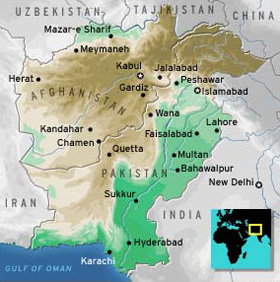 Earlier this month I asked if the Taliban’s rising influence in Pakistan and their removal of Sikhs from the Swat Valley was a harbinger for more extreme religious persecution. This week, two articles caught my eye:
Earlier this month I asked if the Taliban’s rising influence in Pakistan and their removal of Sikhs from the Swat Valley was a harbinger for more extreme religious persecution. This week, two articles caught my eye:
The first depicted multi-religious protests in Kashmir over Pakistan’s inaction in the region. The second implied complicity between the Jawat-ud-dawa (JuD) and the Taliban to use “rescue aid” as a coercive tactic.
The use of “aid” to buy sympathy, garner political favor, or build political support is nothing new, and is described extensively in Machiavelli’s The Prince [source]. Similar concerns were raised in the wake of the Indonesian tsunami, when Muslim communities alleged that Christian aid organizations were forcibly converting orphaned children and the injured by withholding necessary aid. The extent, or veracity, of those allegations was relatively unknown/unquantifiable. Given the Taliban’s extensive campaign-based strategies, in addition to the narrow regional focus of its impact, it should be less difficult to quantify the JuD’s impact.
 Rice University senior, Sukhdeep Kaur, has received the Roy and Hazel Zeff Memorial Fellowship – a $25,000 grant, which will allow her to study issues of human rights and access to justice in areas around the world. The news release states:
Rice University senior, Sukhdeep Kaur, has received the Roy and Hazel Zeff Memorial Fellowship – a $25,000 grant, which will allow her to study issues of human rights and access to justice in areas around the world. The news release states:
A political science and policy studies major with a focus on law and justice, Kaur has a longstanding interest in human rights and justice issues that stems from the violent history between the Indian government and Sikhs in Punjab.
For her fellowship, Kaur will travel to four countries — Chile, Rwanda, Israel and France — to work with minority populations on the issues of access to human rights and justice.
I recently interviewed Sukhdeep and we discussed how she first got involved with human rights. “I knew I wanted to work with law and justice but wasn’t really sure whether to focus on civil rights or human rights,” Kaur said. However, after taking a human rights course her sophomore year and her personal study of the violence toward Sikhs in India in 1984 and subsequent human rights violations, she decided to make this the focus of her field work.
 For those that follow The Langar Hall, Ruby Dhalla is no stranger to our coverage on Canadian politics. Whether it be on our list of Sikh MPs throughout the world, a Sikh Barack Obama, a horrible beating that is symptomatic of the nightmare that is the Punjab Police, or even attendance at NRI Punjabi conference, she has found mention.
For those that follow The Langar Hall, Ruby Dhalla is no stranger to our coverage on Canadian politics. Whether it be on our list of Sikh MPs throughout the world, a Sikh Barack Obama, a horrible beating that is symptomatic of the nightmare that is the Punjab Police, or even attendance at NRI Punjabi conference, she has found mention.
In this post, she becomes the focus. Since last week after the Star published a story, Ruby Dhalla, the Liberal Member of Parliament, representing Brampton-Springdale, has been on the receiving end of a flood of media criticism for the following allegations
[Immigrant home care-givers] claimed that they earned $250 a week working 12- to 16-hour days at the Dhalla family home, that Dhalla herself had seized their passports and that other family members made them wash cars, shovel snow and clean chiropractic clinics owned by the family. [link]
The Canadian press has had a field day and has likened the case to the controversy that led to Eliot Spitzer’s resignation as the governor of New York due to his relationship with a prostitute after being seen as a ‘moralizer.’ Ruby Dhalla has been known to champion immigrant rights issues and women and thus it is for this reason that the allegations have been such damning.
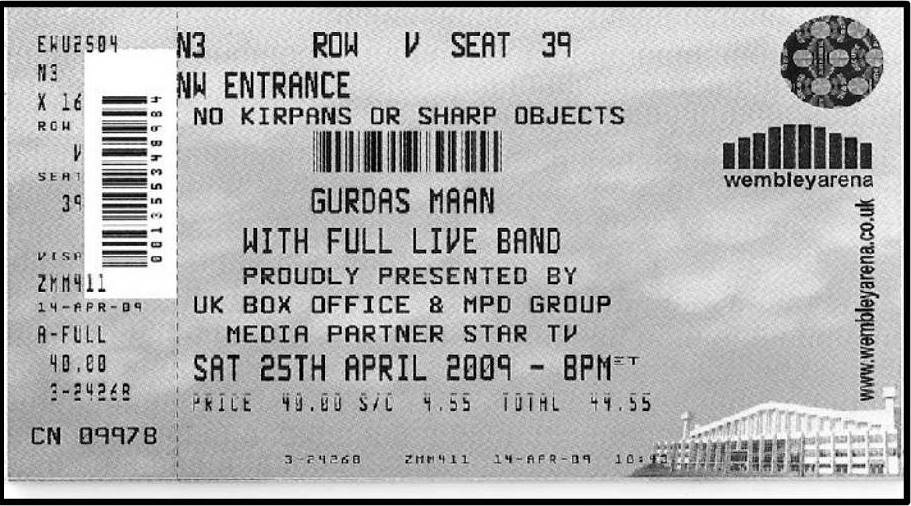
Vaisakhi in the diaspora usually brings two things to those living in cities with large Sikh communities: Nagar Kirtans and Vaisakhi concerts. Unfortunately, if you were an Amritdhari Sikh in London this year and you wanted to partake in both, you would have been out of luck. Tickets for the recent Gurdas Maan concert held at Wembley Arena had a unique warning printed on them, “NO KIRPANS OR SHARP OBJECTS”.
I won’t dwell too much on the irony of banning kirpans at a Vaisakhi concert, which usually start with the requisite dharmak songs, like Gurdas Maan’s tribute to Guru Gobind Singh and his contributions to Sikhi.
What I wonder is exactly what the organizers must have been thinking in doing this. I suspect the banning of kirpans probably falls under generic security rules banning knives and other weapons. In fact the terms and conditions on their website state that the “possession of any article, which is or may be used as a weapon or missile” is strictly prohibited. Pretty standard fare at all large venues.

There were two blurbs in the news this week regarding the ethnic cleansing of Sikhs from Pakistan’s tribal regions along the Afghani border [full disclaimer: both stories are from the Indian press, so there is certainly a different political interest/stake in representing Pakistan as a state with anti-minority insurgency]:
Terming the Taliban as “ruthless killers,” the US today said the action initiated by them against the minority Sikh community in Pakistan’s tribal region was not surprising provides all the more reason to rid the region of extremists.
“I’ve heard reports about that. It doesn’t surprise me. I mean, these are ruthless killers, the Taliban,” State Department spokesman Robert Wood told reporters at his daily press briefing when asked about Taliban’s demand for “Jizya” from Sikhs in Pakistan’s tribal regions forcing them to leave their homes. [link]
India has taken up with Pakistan the issue of treatment of minorities following reports of demolition of Sikhs’ homes in parts of the country. [link]
I fully appreciate the irony of India calling for Pakistan to pay attention to the violent removal of minorities from their homes, and the spillover effects of the Taliban’s activities on the Pakistani border have been well-covered in the media. But this raises a larger question about more bald-faced attempts to crowd Sikhs and other religious minorities fully out of Pakistan. Sikhs already constitute a super thin minority with very little political power. Some would argue this should come as no surprise if people chose to remain within an Islamic Republic. Nonetheless, this additional pressure places an additional strain on minority communities who have negotiated remaining within Pakistan. Does this indicate Pakistan’s overall weakness in enforcing its border, or does it illustrate a political decision not to get involved while the Taliban capitalizes on underlying beliefs around minority groups? As this culture of intolerance moves east, is it the harbinger for a larger cultural shift within Pakistan? It certainly calls for the homogenization of the State, including forms of practice within Islam, but was this an interim sacrifice in order to preserve primacy for the central government?
 Go to virtually any diasporan Sikh’s house that has an interest in Sikhi and you will find the ubiquitous blue book. On the cover is a dashing picture of Shaheed Jarnail Singh Ji Khalsa Bhindranwale. The title: Fighting For Faith and Nation: Dialogues with Sikh Militants. While too few Sikhs actually complete the book to those that are patient and willing, anthropologist Cynthia Keppley Mahmood explores the world of Sikh militants through their own voices, allowing them to air the very humanity that continues to be denied by a totalitarian state machinery.
Go to virtually any diasporan Sikh’s house that has an interest in Sikhi and you will find the ubiquitous blue book. On the cover is a dashing picture of Shaheed Jarnail Singh Ji Khalsa Bhindranwale. The title: Fighting For Faith and Nation: Dialogues with Sikh Militants. While too few Sikhs actually complete the book to those that are patient and willing, anthropologist Cynthia Keppley Mahmood explores the world of Sikh militants through their own voices, allowing them to air the very humanity that continues to be denied by a totalitarian state machinery.
At a time when even too many Sikh authors and scholars were silent as Dr. Mahmood, herself, laments:
“Sikh Studies,” a traditionally Orientalist field that has consciously steered clear of the topic of conflict in Punjab, even as tens of thousands of Sikhs perished, wants us to look at medieval religious texts while the heart of Sikhism is in flames. If we touch the fire, if then too we burn and say ouch! – then we are shunned. But then again, academia has never done well in perilous times.
The Sikhs found two strong voices who I call our Sikh Bibiyan of the Academy – Joyce Pettigrew and Cynthia Keppley Mahmood. In fact, Sikhs who have never had the fortune to meet them, lovingly refer to them by their first names [as if they are part of our family] – Joyce and Cynthia [contrast this with those involved in “Sikh Studies”, who are only known by their last names “McLeod”, “Oberoi”, etc.] Cynthia’s book is a classic and its place on the bookshelf of every diasporan Sikh is every bit warranted. If it is not on yours, make sure to add it.
While all this is covering the familiar, what inspired her to write and give pen to the voices of Sikh militants is every bit as inspiring as those that she interviewed. In my opinion just as those that inspire by fighting for faith and nation, Cynthia is a fighter, gifted with courage and inspiration.
As part of Sikh Chic’s “1984 and I” series, Cynthia reveals her own personal story for the first time:
In this deeply personal account, I describe for the first time how I was assaulted, beaten and raped by a gang of hired thugs or rogue police in a north central Indian state during fieldwork in 1992. A graphic narrative of this event leads into a brief meditation on the sorts of things readers would typically prefer not to know, and on our compulsion as engaged anthropologists to bring them into the conversation anyway. I conclude with the persisting hope of survivors of violence – like many of our ethnographic interlocutors in arenas of conflict – that healing is possible and that change toward justice can occur. Finally, I write of an anthropology that speaks from a spiritual, political and intellectual paradigm which recognizes that, unspoken or not, values of the heart are as central to our field as those of the mind. [Cynthia Keppley Mahmood, Senior Fellow in Peace Studies, Department of Anthropology, University of Notre Dame, U.S.A.]
I encourage ALL to read her entire piece.
Cynthia Mahmood, author of the groundbreaking work, “Fighting for Faith and Nation,” just published an incredibly personal and powerful account of her rape and assault, possibly by Indian police, in an attempt to silence her  anthropological work on Sikhs in Punjab in the early 1990s. Luckily for all of us, the rape did not accomplish its goal and instead seems to have fueled Ms. Mahmood’s fire. She courageously continued her work and has again shown courage in speaking publicly about such a deeply personal, and deeply difficult incident. Ms. Mahmood’s work has been incredibly important to revealing the human side of the violent Sikh movement for independence and the brutal suffering of Sikh civilians in Punjab during the 1980s and 1990s. Without her contribution, the movement for justice for 1984 and the following decade would not be where it is today. Through her rigorous scholarship and powerful writing, she exposed a side of the story of Punjab that otherwise perhaps would have been left uncovered. In addition to “Fighting for Faith and Nation,” she co-authored the also ground-breaking work, “Reduced to Ashes: The Insurgency and Human Rights in Punjab.” I can’t emphasize enough how important her scholarship has been to the Sikh community. She’s a frequent speaker, commentator, and expert on Sikh separatism and human rights in Punjab.
anthropological work on Sikhs in Punjab in the early 1990s. Luckily for all of us, the rape did not accomplish its goal and instead seems to have fueled Ms. Mahmood’s fire. She courageously continued her work and has again shown courage in speaking publicly about such a deeply personal, and deeply difficult incident. Ms. Mahmood’s work has been incredibly important to revealing the human side of the violent Sikh movement for independence and the brutal suffering of Sikh civilians in Punjab during the 1980s and 1990s. Without her contribution, the movement for justice for 1984 and the following decade would not be where it is today. Through her rigorous scholarship and powerful writing, she exposed a side of the story of Punjab that otherwise perhaps would have been left uncovered. In addition to “Fighting for Faith and Nation,” she co-authored the also ground-breaking work, “Reduced to Ashes: The Insurgency and Human Rights in Punjab.” I can’t emphasize enough how important her scholarship has been to the Sikh community. She’s a frequent speaker, commentator, and expert on Sikh separatism and human rights in Punjab.
I’m astounded and inspired. You must read the entire account, though I’ve copied a few passages below. Ms. Mahmood reveals herself to be resilient, committed to truth, and irrepressible in spirit.
During 1984, Ms. Mahmood was in India studying ancient Buddhism for her dissertation, “Rebellion and Response in Ancient India: Political Dynamics of the Hindu-Buddhist Tradition” when the struggle between Sikhs and the central government was constantly in the news. She travelled to Bihar in 1992 to study a tribal group, and in a north central Indian state, was discouraged- severely- by (possible) Hindu nationalists from studying the Sikhs of Punjab. The discouragement came in the form of a severe assault and a brutal gang-rape.
Her account of the rape is visceral and will leave you haunted.
Slash, slash, blood. I see the blood dripping, even in the dark. I smell my own blood over the smell of the rotten tangerines.
I cannot fight back, not against this. I should survive, only survive.
Oh! I hadn’t noticed. Black-shoe man is raping me. [link]
 Earlier this month, worldwide Human Rights organization Amnesty International released a news article on the plight of Sikh Massacre victims of 1984, still awaiting justice after 25 years. This came shortly after the Delhi Court delayed ruling on Jagdish Tytler, due to the CBI’s inability to produce enough evidence against him. Ramesh Gopalakrishnan, Amnesty International’s South Asia Researcher stated:
Earlier this month, worldwide Human Rights organization Amnesty International released a news article on the plight of Sikh Massacre victims of 1984, still awaiting justice after 25 years. This came shortly after the Delhi Court delayed ruling on Jagdish Tytler, due to the CBI’s inability to produce enough evidence against him. Ramesh Gopalakrishnan, Amnesty International’s South Asia Researcher stated:
“The fact that almost 3,000 people can be murdered without anyone being brought to justice is offensive to any notion of justice and should be an embarrassment to the Indian government.”
“For the Indian government to dismiss these cases due to lack of evidence is farcical. The various agencies responsible for carrying out the investigations failed to carry out the most cursory of tasks – including recording eyewitness and survivor statements.”
As troubling as it is to read this, I was pleased to find that Amnesty International had covered it at all. As many of know, AI, as well as other independent human rights groups and initiatives were either banned or prevented from conducting research in India in the late 1980’s and early 1990’s. It seems as though there is hope for an independent investigation on the 1984 anti-Sikh pogroms and perhaps the subsequent disappearances during the counter-insurgency.
Not so fast…in an un-related story, the Tribune reported that Amnesty International has decided to shut down its India operations. The decision is said to have been triggered by continued denial to the Amnesty International Foundation of the FCRA (Foreign Contribution Regulation Act) registration by the Government of India.
(more…)
Blogged: Amol Singh
 On the night of April 24, 1915, over 200 of Constantinople’s Armenian intellectual and civic leaders were taken from their homes and boarded upon trains headed eastward toward the city of Ankara. What followed over the next few months would be a concerted, systematic Ottoman project meant to eradicate the Armenian identity. Millions of Armenians, depicted by the state as dangerous Russian conspirators and hazardous to the security of the Ottoman Empire, were uprooted from their homes and marched across the Turkish desert. What transpired over the course of that summer was the raping, pillaging, and butchering of over a million people. Though the Ottoman forces might have failed in the complete liquidation of a people, genocide served as a near consolation prize.
On the night of April 24, 1915, over 200 of Constantinople’s Armenian intellectual and civic leaders were taken from their homes and boarded upon trains headed eastward toward the city of Ankara. What followed over the next few months would be a concerted, systematic Ottoman project meant to eradicate the Armenian identity. Millions of Armenians, depicted by the state as dangerous Russian conspirators and hazardous to the security of the Ottoman Empire, were uprooted from their homes and marched across the Turkish desert. What transpired over the course of that summer was the raping, pillaging, and butchering of over a million people. Though the Ottoman forces might have failed in the complete liquidation of a people, genocide served as a near consolation prize.
As April 24th approaches, Armenians around the world will gather as they have for the past 90+ years and demand that the Turkish state take responsibility for its actions. This summer, as Sikhs also embark on projects to mark the events of 1984, it seems hard to escape the fact that we too, are becoming part of a global collective searching for some sort of acceptance of the atrocities that have been done to us. This sharing of spaces by the world’s downtrodden is allowing for more nuanced perspectives of each atrocity. In this understanding, the 1915 Armenian genocide becomes not a yearlong campaign to annihilate Armenia, but rather a set of events concurrent with a larger Ottoman decades- long campaign meant to undermine Armenian existence. In this sphere, Operation Blue Star becomes not a plan to rid Harimander Sahib of radicals hijacking the Sikh identity, but rather another incident in a set of systematic attacks on Sikh sovereignty by the Indian Center.
In this mold, we are becoming participants in a unique Genocidees Anonymous of sorts, where the recognition of our tragedies becomes cast into a set of layered political demands.
It seems like Canada is showcasing one socially conscious Sikh rapper after another. TLH has covered “Humble The Poet” and now here is “Sikh Knowledge” from Montreal. Sikh Knowledge raps with Lotus on issues effecting the 2nd generation and marginalized peoples.
Kanwar Anit Singh Saini, a.k.a. Sikh Knowledge, is the son of Punjabi Sikh immigrants. He works in the field of speech pathology where he contributes his musical knowledge to the health sciences field.
Check out his songs below and let us know what you think!
Disclaimer: There are graphic descriptions and swear words in the videos below.
Today, I want to share with you, Nirpreet Kaur’s story. I highlight her story for 2 reasons. 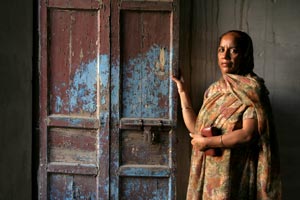
First, as we’ve discussed on this blog before, the majority of Sikh history as its been documented thus far really is his-tory. So this piece of her-story is a rare gem. And second, too often, we think of women in the Sikh community only in our roles as mothers, sisters, wives, and daughters. These are all important roles but our identity isn’t entirely defined relative to others’ or based on our relationships with others. Yet we recognize the additional roles we play outside of these expected roles too rarely. And so… Nirpreet Kaur.
Nirpreet was 16 years old on November 2, 1984 when the mob came for her father, Nirmal Singh…”[Khokhar- a Youth Congress leader] sweet-talked my father into coming with him for a compromise,” says Nirpreet. But Khokhar went straight to the mob and handed Nirmal Singh over. The oldest of three siblings, Nirpreet, ran to the mob but could only watch helplessly as her father was tied up and set ablaze. [link]
To avenge the killing of her father, Nirpreet joined the Khalistani movement.
As a functionary of the then dreaded All India Sikh Students Federation, Nirpreet came in contact with those involved with the Khalistan movement, an armed insurgency fighting for an independent Sikh homeland in Punjab, and became part of the militancy that ravaged the state for over a decade in the 1980s.[link]
